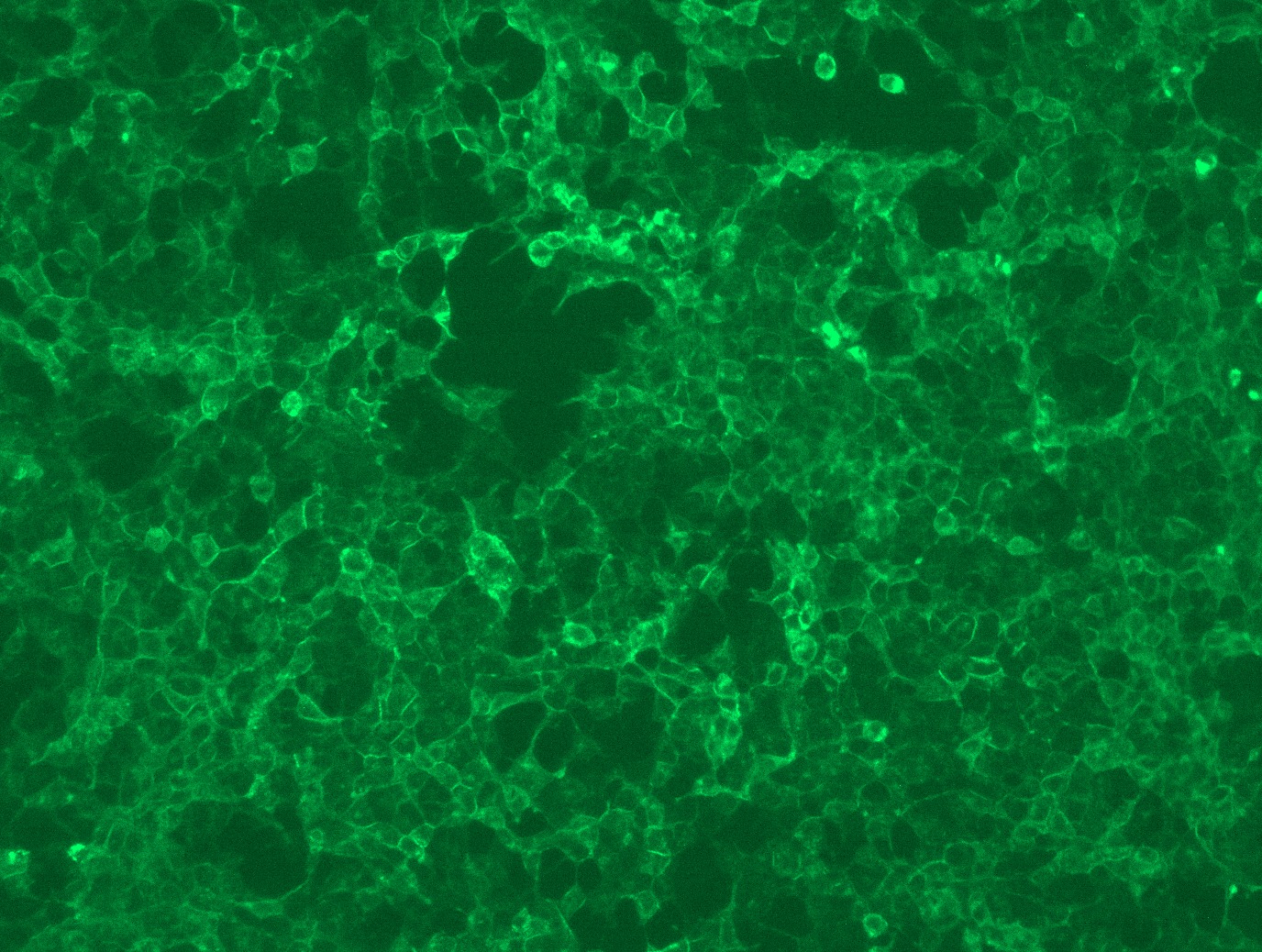Dll1 (NM_007865) Mouse Tagged ORF Clone Lentiviral Particle
CAT#: MR226161L1V
- LentiORF®
-

Lenti ORF particles, Dll1 (Myc-DDK-tagged) - Mouse delta-like 1 (Drosophila) (Dll1), 200ul, >10^7 TU/mL
Lentiviral Particles: DDK w/ Puro mGFP mGFP w/ Puro
Interest in protein/lysate? Submit request here!
Buy this product and get 50% off on the Lenti RapidTiter kit. Use Code: Rapid50
USD 365.00
Specifications
| Product Data | |
| Type | Mouse Tagged ORF Clone Lentiviral Particle |
| Tag | Myc-DDK |
| Symbol | Dll1 |
| Synonyms | Delta1 |
| Mammalian Cell Selection | None |
| Vector | pLenti-C-Myc-DDK |
| ACCN | NM_007865 |
| ORF Size | 2166 bp |
| Sequence Data |
The ORF insert of this clone is exactly the same as(MR226161).
|
| OTI Disclaimer | The molecular sequence of this clone aligns with the gene accession number as a point of reference only. However, individual transcript sequences of the same gene can differ through naturally occurring variations (e.g. polymorphisms), each with its own valid existence. This clone is substantially in agreement with the reference, but a complete review of all prevailing variants is recommended prior to use. More info |
| OTI Annotation | This clone was engineered to express the complete ORF with an expression tag. Expression varies depending on the nature of the gene. |
| Reference Data | |
| RefSeq | NM_007865.3, NP_031891.2 |
| RefSeq Size | 3444 bp |
| RefSeq ORF | 2169 bp |
| Locus ID | 13388 |
| UniProt ID | Q61483 |
| Cytogenetics | 17 8.95 cM |
| Gene Summary | Transmembrane ligand protein of NOTCH1, NOTCH2 and NOTCH3 receptors that binds the extracellular domain (ECD) of Notch receptor in a cis and trans fashion manner (PubMed:21985982, PubMed:10958687). Following transinteraction, ligand cells produce mechanical force that depends of a clathrin-mediated endocytosis, requiring ligand ubiquitination, EPN1 interaction, and actin polymerisation; these events promote Notch receptor extracellular domain (NECD) transendocytosis and triggers Notch signaling through induction of cleavage, hyperphosphorylation, and nuclear accumulation of the intracellular domain of Notch receptors (NICD) (PubMed:10958687, PubMed:18676613). Is required for embryonic development and maintenance of adult stem cells in many different tissues and immune systeme; the DLL1-induced Notch signaling is mediated through an intercellular communication that regulates cell lineage, cell specification, cell patterning and morphogenesis through effects on differentiation and proliferation (PubMed:17194759, PubMed:19562077, PubMed:18997111, PubMed:23695674, PubMed:16495313, PubMed:21238454, PubMed:22282195, PubMed:7671806, PubMed:17960184, PubMed:22529374, PubMed:19389377, PubMed:23699523, PubMed:19144989, PubMed:23688253, PubMed:23806616, PubMed:26114479, PubMed:22940113, PubMed:25220152, PubMed:20081190, PubMed:21572390, PubMed:22096075). Plays a role in brain development at different level, namely by regulating neuronal differentiation of neural precursor cells via cell-cell interaction, most likely through the lateral inhibitory system in an endogenous level dependent-manner (PubMed:7671806, PubMed:18997111). During neocortex development, Dll1-Notch signaling transmission is mediated by dynamic interactions between intermediate neurogenic progenitors and radial glia; the cell-cell interactions are mediated via dynamic and transient elongation processes, likely to reactivate/maintain Notch activity in neighboring progenitors, and coordinate progenitor cell division and differentiation across radial and zonal boundaries (PubMed:23699523). During cerebellar development, regulates Bergmann glial monolayer formation and its morphological maturation through a Notch signaling pathway (PubMed:23688253). At the retina and spinal cord level, regulates neurogenesis by preventing the premature differentiation of neural progenitors and also by maintaining progenitors in spinal cord through Notch signaling pathway (PubMed:19389377, PubMed:26114479). Also controls neurogenesis of the neural tube in a progenitor domain-specific fashion along the dorsoventral axis (PubMed:20081190). Maintains quiescence of neural stem cells and plays a role as a fate determinant that segregates asymmetrically to one daughter cell during neural stem cells mitosis, resulting in neuronal differentiation in Dll1-inheriting cell (PubMed:23695674). Plays a role in immune systeme development, namely the development of all T-cells and marginal zone (MZ) B cells (PubMed:15146182, PubMed:19217325). Blocks the differentiation of progenitor cells into the B-cell lineage while promoting the emergence of a population of cells with the characteristics of a T-cell/NK-cell precursor (By similarity). Upon MMP14 cleavage, negatively regulates Notch signaling in haematopoietic progenitor cells to specifically maintain normal B-cell development in bone marrow (PubMed:21572390). Also plays a role during muscle development. During early development, inhibits myoblasts differentiation from the medial dermomyotomal lip and later regulates progenitor cell differentiation (PubMed:17194759). Directly modulates cell adhesion and basal lamina formation in satellite cells through Notch signaling. Maintains myogenic progenitors pool by suppressing differentiation through down-regulation of MYOD1 and is required for satellite cell homing and PAX7 expression (PubMed:22940113). During craniofacial and trunk myogenesis suppresses differentiation of cranial mesoderm-derived and somite-derived muscle via MYOD1 regulation but in cranial mes |
Documents
| Product Manuals |
| FAQs |
| SDS |
Resources
{0} Product Review(s)
Be the first one to submit a review






























































































































































































































































 Germany
Germany
 Japan
Japan
 United Kingdom
United Kingdom
 China
China


